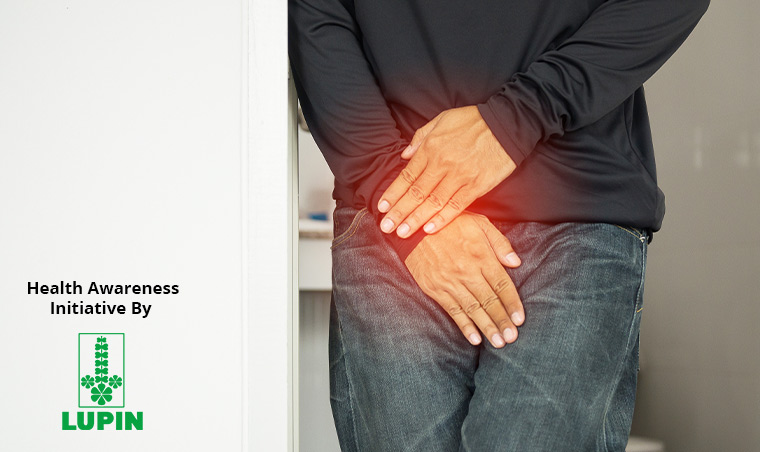Urinary Incontinence – What Is It And How Kegel Exercises & Yoga Can Fix It?
By Dr. Nikita Toshi +2 more

Get,

to manage your symptom
Get your,


4 Cr+ families
benefitted

OTP sent to 9988776655



You’ve successfully subscribed to receive
doctor-approved tips on
Whatsapp

Get ready to feel your best.

Hi There,
Download the PharmEasy App now!!


Register to Avail the Offer
Send OTPBy continuing, you agree with our Privacy Policy and Terms and Conditions

Hi There,
Sign up on PharmEasy now!!
Trusted by 4 crore+ families

OTP sent to 9988776655



You have unlocked 25% off on medicines




Code: NU25
By Dr. Nikita Toshi +2 more
Incontinence is one of the most undiscussed topics around the world as most people consider it a social embarrassment and refrain from seeking professional help. To help people get over this social awkwardness the International Continence Society (ICS) runs a yearly one-week campaign to raise awareness about the health condition.
This year, this social awareness week will be observed between 21 and 27 June and The Urology Foundation will highlight the adverse effects urinary incontinence can pose.

Table of Contents
It is referred to as the involuntary leakage of urine, which means a patient has either lost or weakened control over his/her bladder. It is the reason behind adult bedwetting leading to sleep issues. Because of being unreported, the cases of urinary continence are increasing rapidly.
According to research, women suffer from urinary incontinence more than men. The research claims that about 30% of women suffer from this problem between 30 to 60 years of age, while 1.5% to 5% of men suffer from this problem during this age.
People usually suffer from occasional or minor leaks of urine, but some may lose small to moderate amounts of it involuntarily. The frequency of it happening also differs from patient to patient.
Let’s read about the different symptoms based on the types of incontinence:
It can be a result of multiple factors like daily habits, underlying health conditions or physical issues. The causes of urinary incontinence can be differentiated by dividing the problem into two different categories: Temporary incontinence and Persistent incontinence. Have a look:
There can be particular drinks, food or medicines which may result in stimulation of your bladder and increase the volume of urine. These include:
Urinary incontinence can also be a result of minor health conditions like:
Urinary incontinence can also persist for a long time because of some underlying health condition or bodily changes. These include:
There are plenty of risk factors associated with urinary incontinence. Have a look:
Chronic urinary incontinence can lead to many complications like:
This condition isn’t always preventable but by following some healthy lifestyle methods, you can reduce the chances of developing it. Have a look:
The ideal treatment is determined after analysing several factors like the type of incontinence, age, overall health and mental condition of the patient. Following are some options that your doctor may advise you to help in dealing with incontinence:
It is also called pelvic floor exercises and is proven to be very helpful in dealing with this problem. It is important that you learn and perform these exercises correctly. These exercises help in strengthening the urinary sphincter and pelvic floor muscles, which improves bladder control.
Bladder training is a proven way of helping the patient in regaining control over his/her bladder.
Yoga has also proven to be a great self-help method to get over urinary incontinence. Experts have found out that Yoga helps in regaining control over the bladder and avoid involuntary leakage.
Mentioned below is the Viniyoga sequence proven to improve the strength of your pelvic muscles:
It is also important to understand that yoga is effective when performed correctly. You may first learn the steps of this yoga from a trainer and also seek approval regarding your health, as individual needs and restrictions vary depending on other associated health conditions.
Medications can be prescribed by your doctor depending on the cause of incontinence.
Sometimes an underlying cause may require surgical intervention to provide relief in the symptoms of incontinence.
Various products ( eg. adult diapers) and devices (eg. catheters and collection devices) are available to help you ease your problems with this condition.
Urinary incontinence is a widely increasing health condition that can be treated easily without much medical intervention most of the time. People should get out of the closet and speak about the issue, just like they do if they have a heart condition or any other major health condition. There is no point in making your own life miserable because of a minor health issue that can majorly affect the quality of your life. It is recommended that you should consult a doctor at the earliest and follow his advice on lifestyle modifications, diet and medications to manage this condition. Taking the right treatment measures well on time can improve your social, physical and mental wellbeing to a great extent.
Disclaimer: The information provided here is for educational/awareness purposes only and is not intended to be a substitute for medical treatment by a healthcare professional and should not be relied upon to diagnose or treat any medical condition. The reader should consult a registered medical practitioner to determine the appropriateness of the information and before consuming any medication. PharmEasy does not provide any guarantee or warranty (express or implied) regarding the accuracy, adequacy, completeness, legality, reliability or usefulness of the information; and disclaims any liability arising thereof.
Links and product recommendations in the information provided here are advertisements of third-party products available on the website. PharmEasy does not make any representation on the accuracy or suitability of such products/services. Advertisements do not influence the editorial decisions or content. The information in this blog is subject to change without notice. The authors and administrators reserve the right to modify, add, or remove content without notification. It is your responsibility to review this disclaimer regularly for any changes.

Leave your comment...
Comments